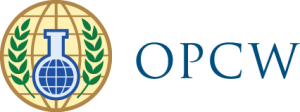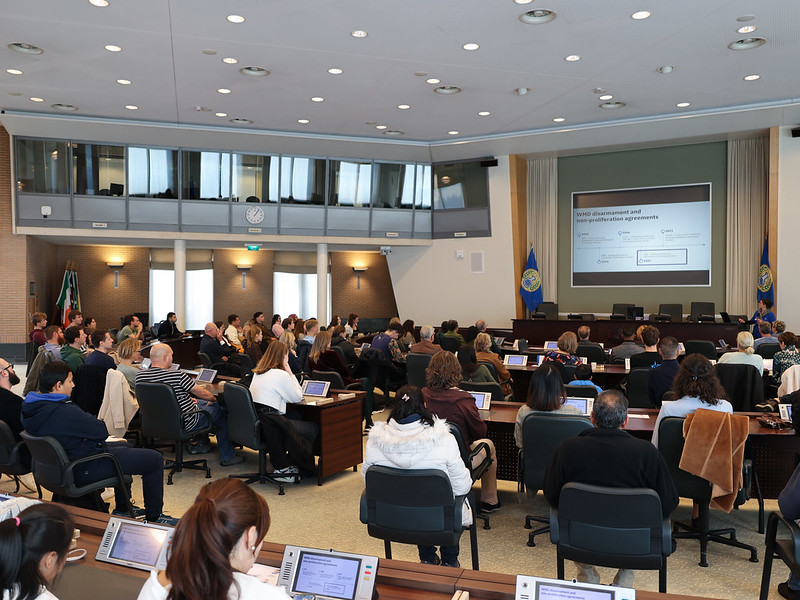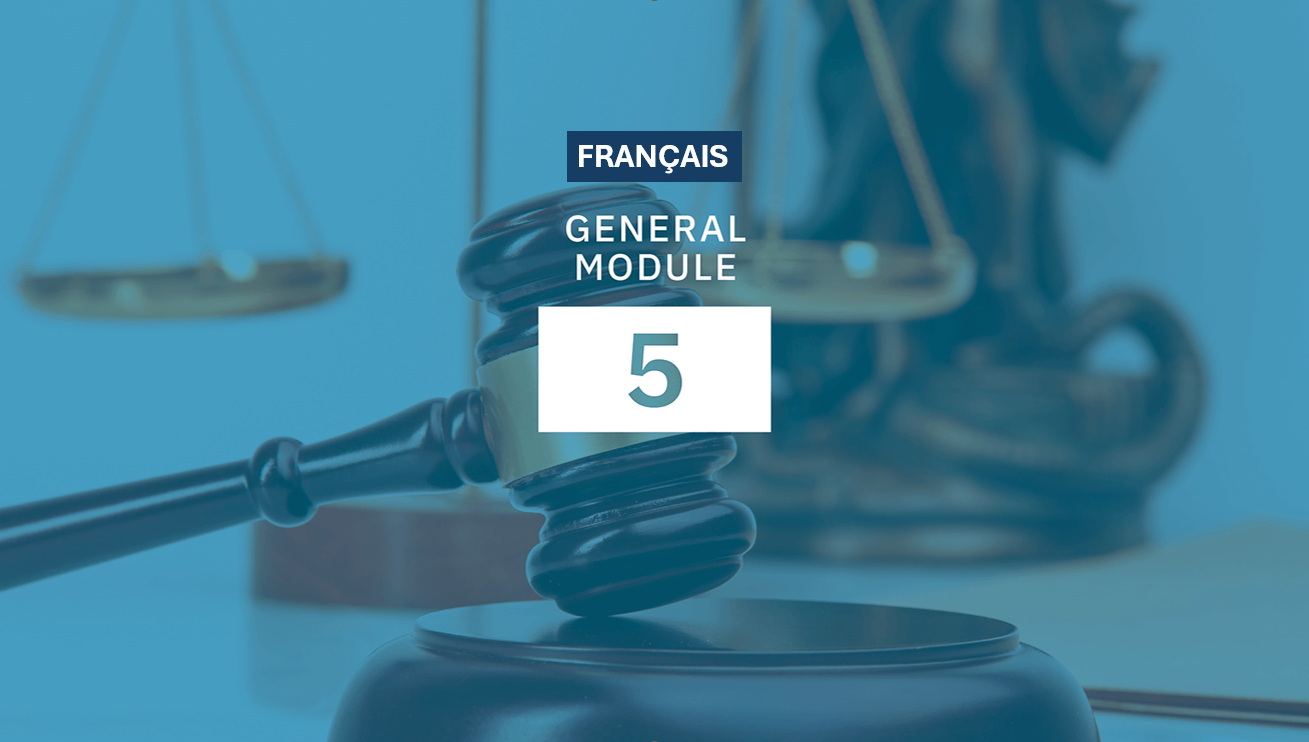
- Législation d’application nationale
Ce module traite de l'obligation d'adopter une législation d’application nationale afin de permettre la mise en œuvre de la Convention sur l’interdiction des armes chimiques au niveau national.
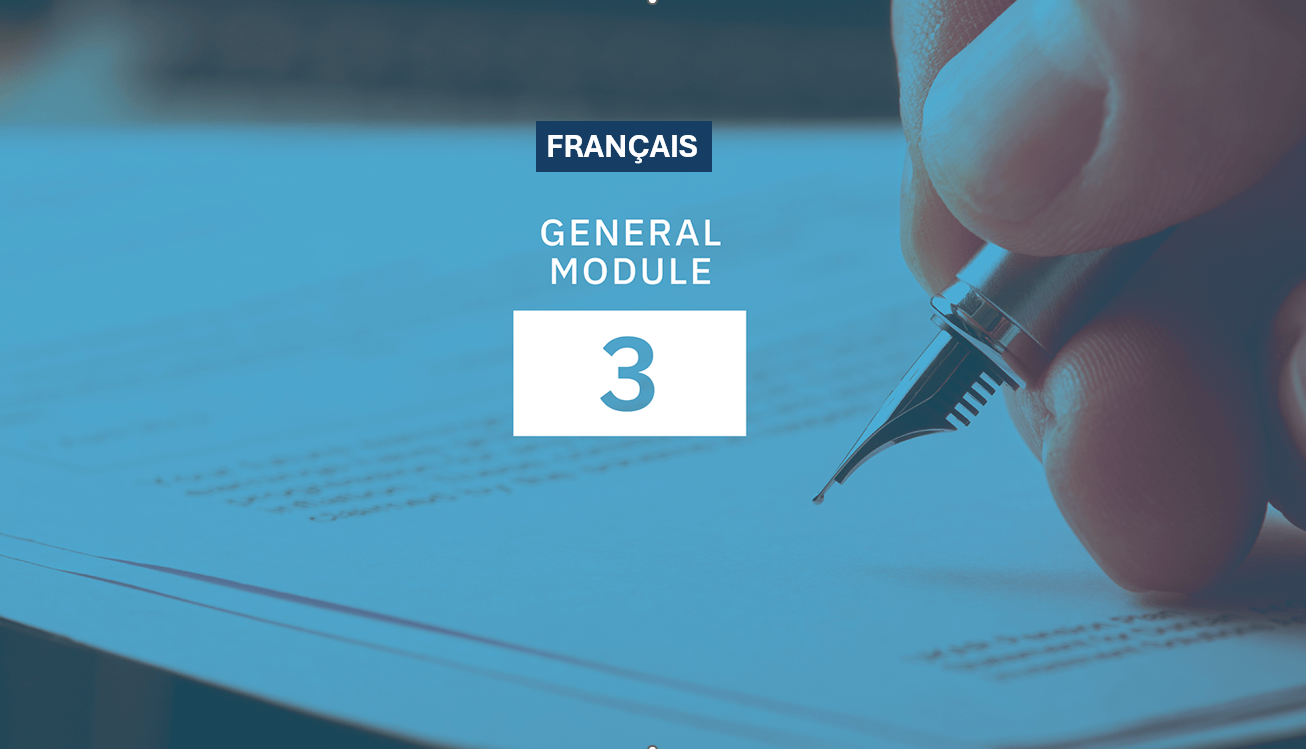
- La Convention sur l'interdiction des armes chimiques : Article par Article
Dans ce module, vous découvrirez le Préambule, les 24 Articles et les 3 Annexes de la Convention sur l'interdiction des armes chimiques.

- Module 9: Article XI - An Introduction to Chemical Safety and Security Management
In this module you will learn about the chemical safety and security management principles. It will provide you with tools and knowledge on mitigation of risks arising from chemical accidents and the potential misuse of highly toxic chemicals, including the threat of terrorism.
A pass grade of 80% in the Final Test is required to obtain a Certificate.
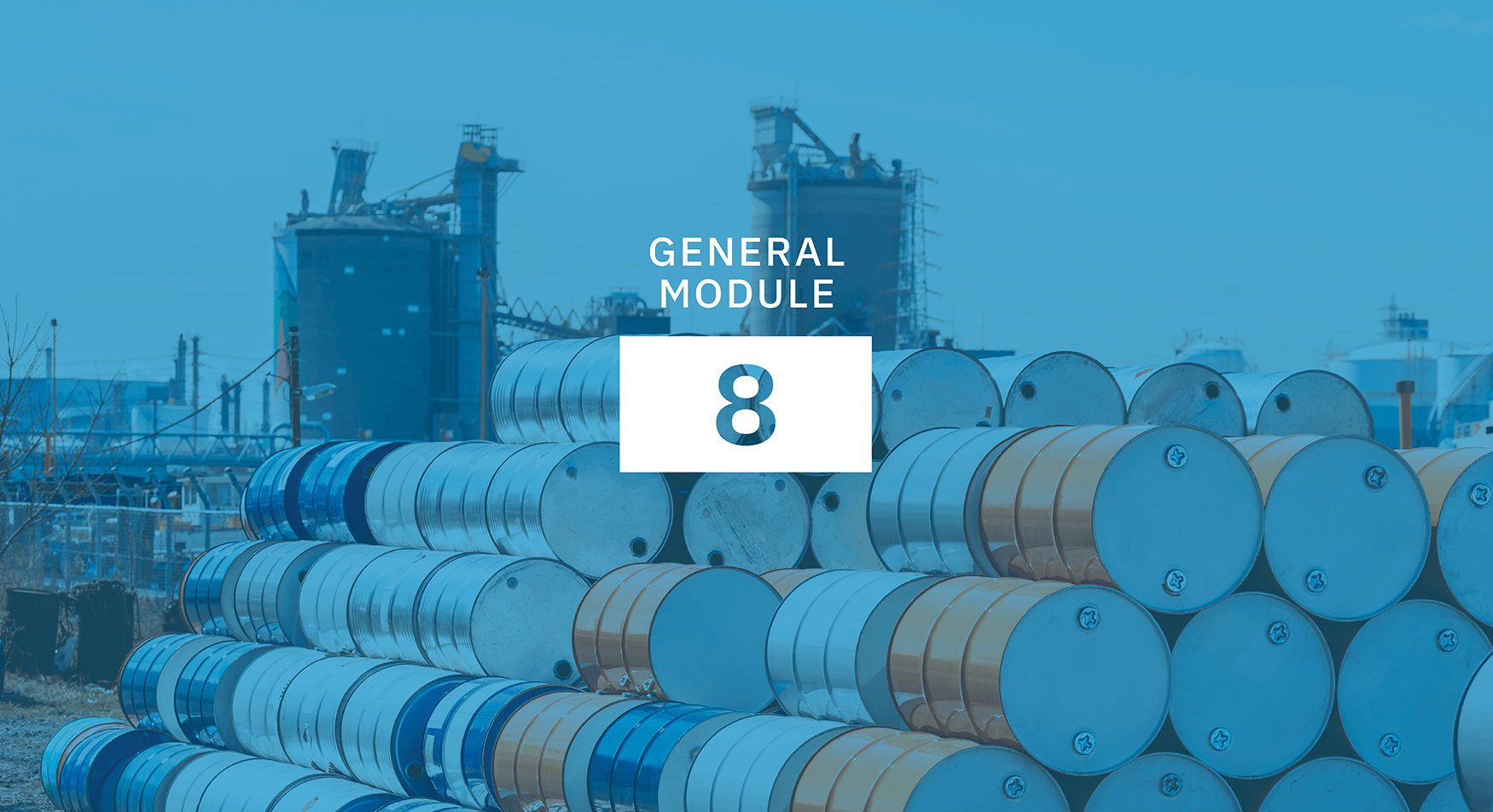
- Module 8: A Guide for National Authorities on Submissions under Article X via the Online Platform PAD
This module introduces the Protection and Assistance Databank (PAD) and provides practical information on the use of PAD.
A pass grade of 80% in the Final Test is required to obtain a Certificate.
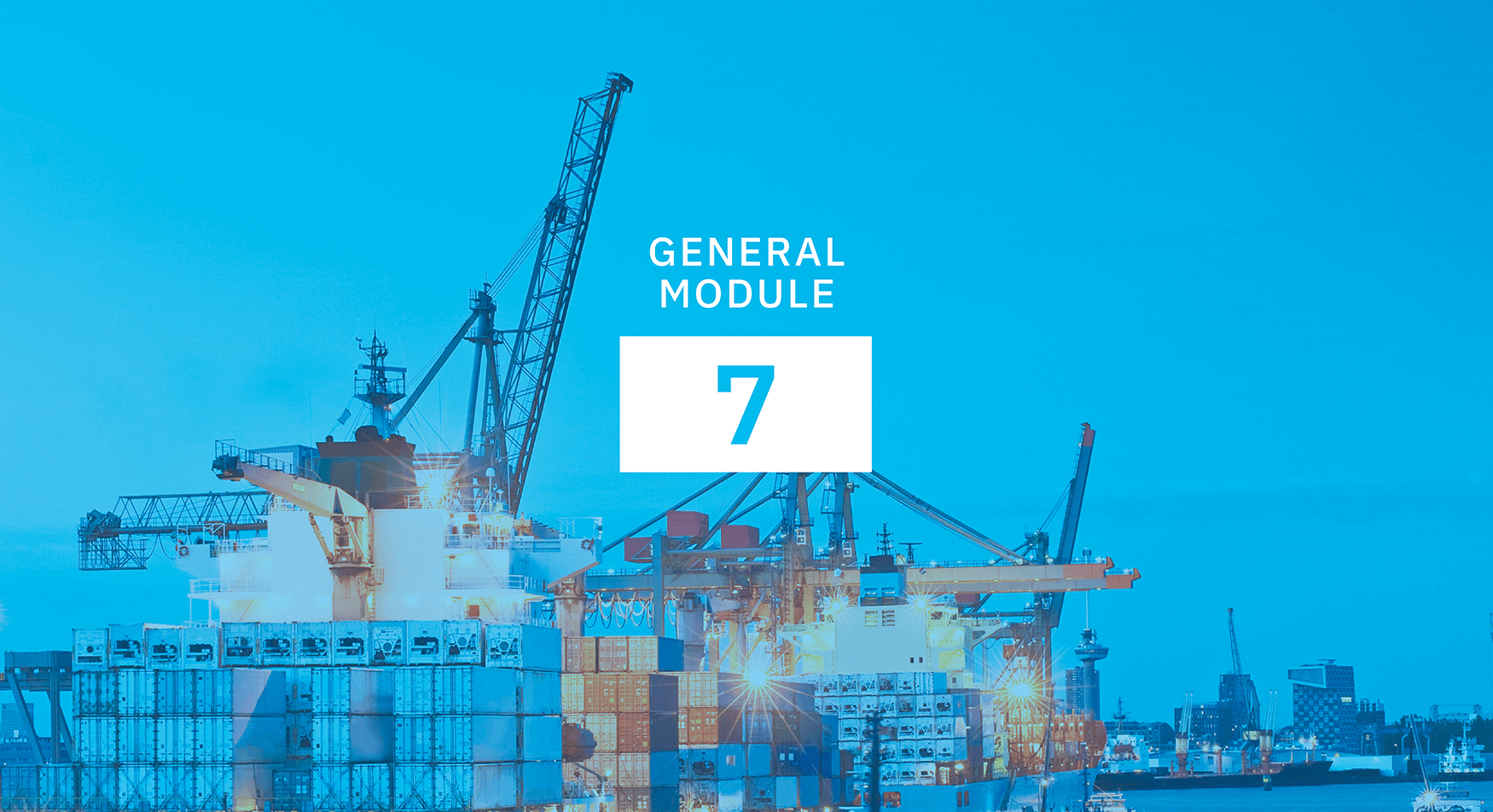
- Module 7: National Implementing Legislation: Initial Measures
This module will provide you with the knowledge and support necessary for effective implementation of the Chemical Weapons Convention at a national level.
A pass grade of 80% in the Final Test is required to obtain a Certificate.
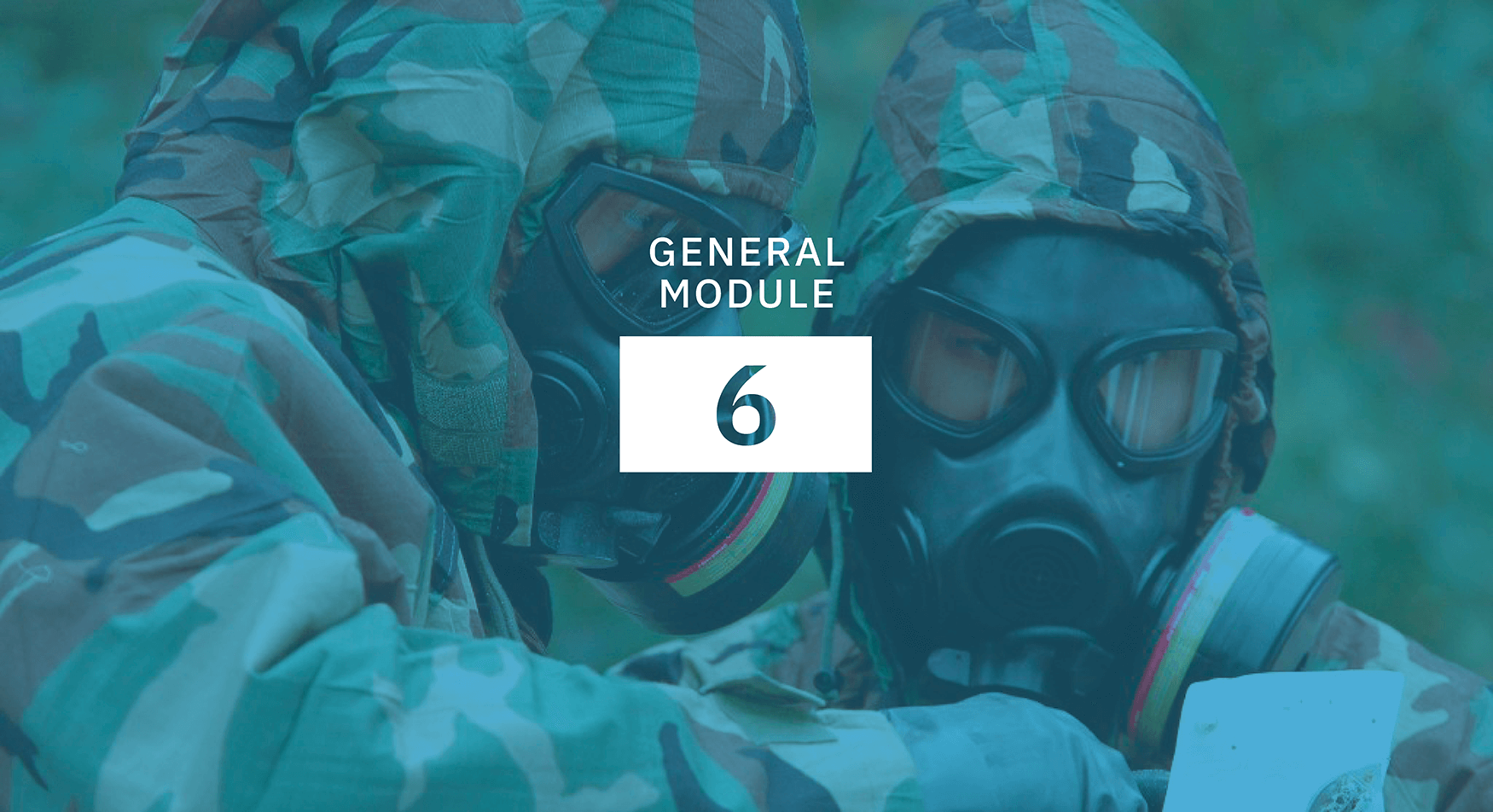
- Module 6: Implementation of Article X: Assistance and Protection
In this module you’ll learn how the OPCW and States Parties implement Article X of the Chemical Weapons Convention, which addresses assistance and protection against chemical weapons.
A pass grade of 80% in the Final Test is required to obtain a Certificate.
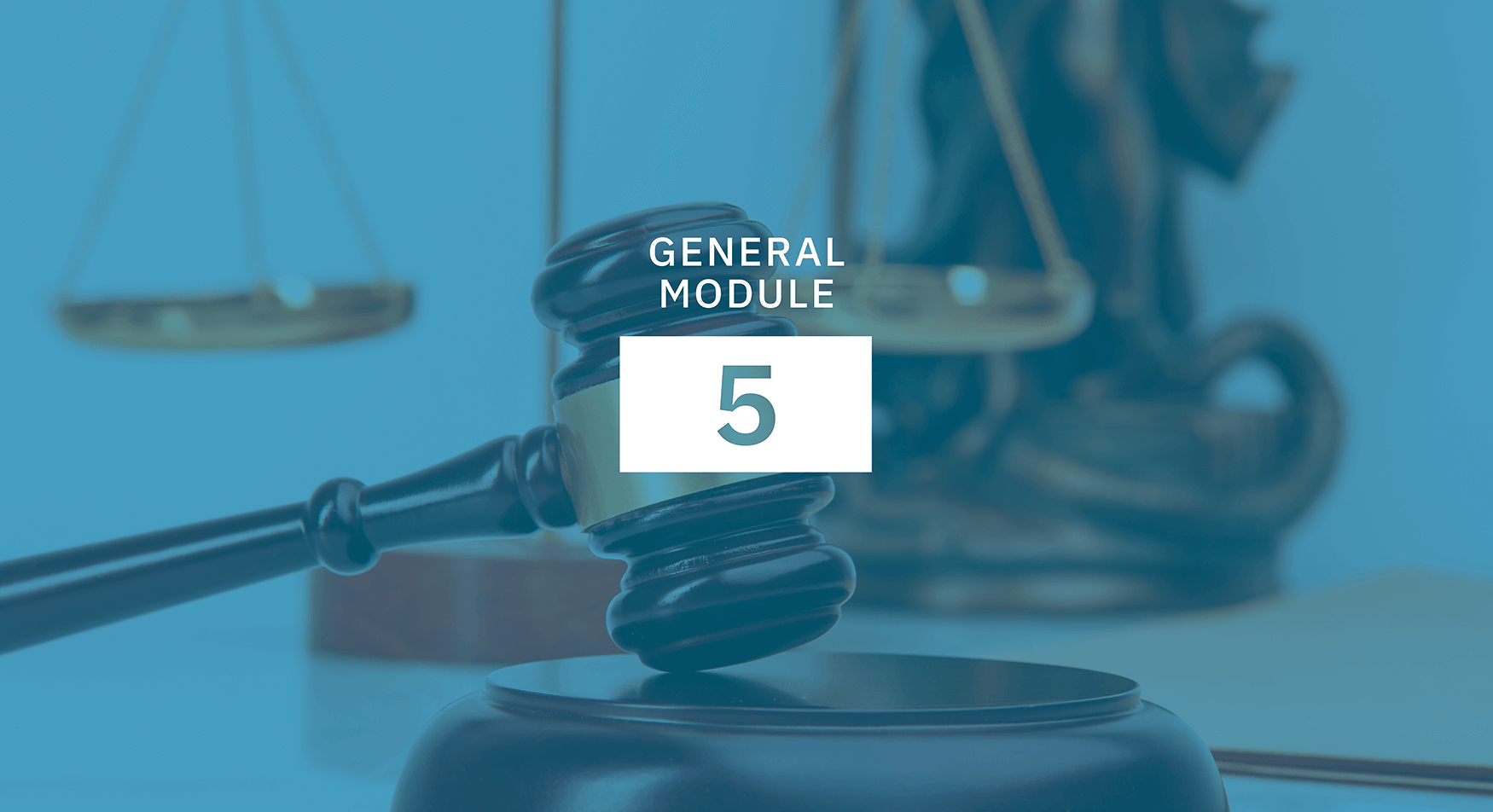
- Module 5: National Implementing Legislation
This module covers the obligation to enact National Implementing Legislation to allow the enforcement of the Chemical Weapons Convention at a national level.
A pass grade of 80% in the Final Test is required to obtain a Certificate.
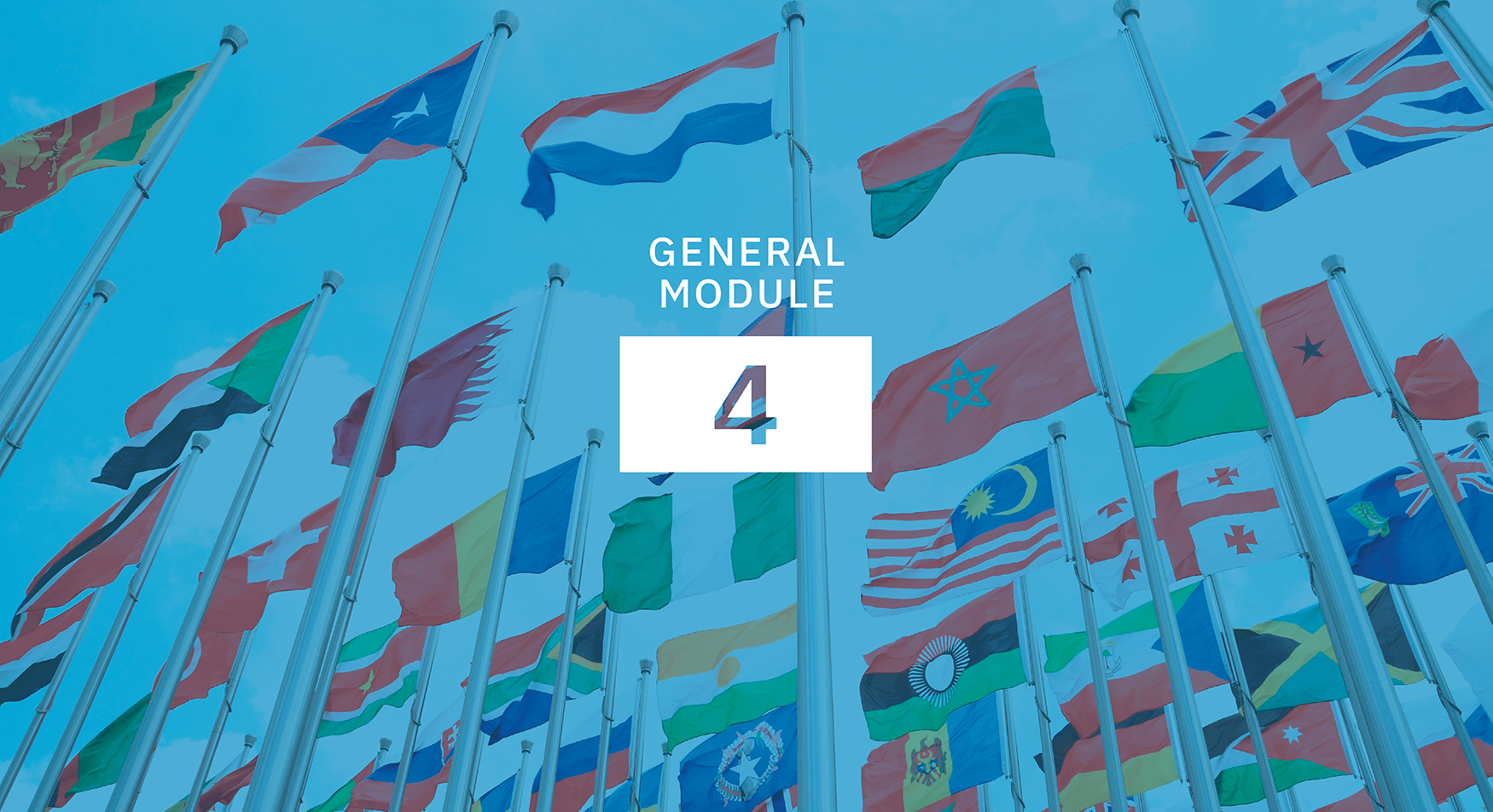
- Module 4: Establishing and Running a National Authority
In this module you’ll learn about establishing/designating and running a National Authority and the specific tasks and obligations they deal with.
A pass grade of 80% in the Final Test is required to obtain a Certificate.
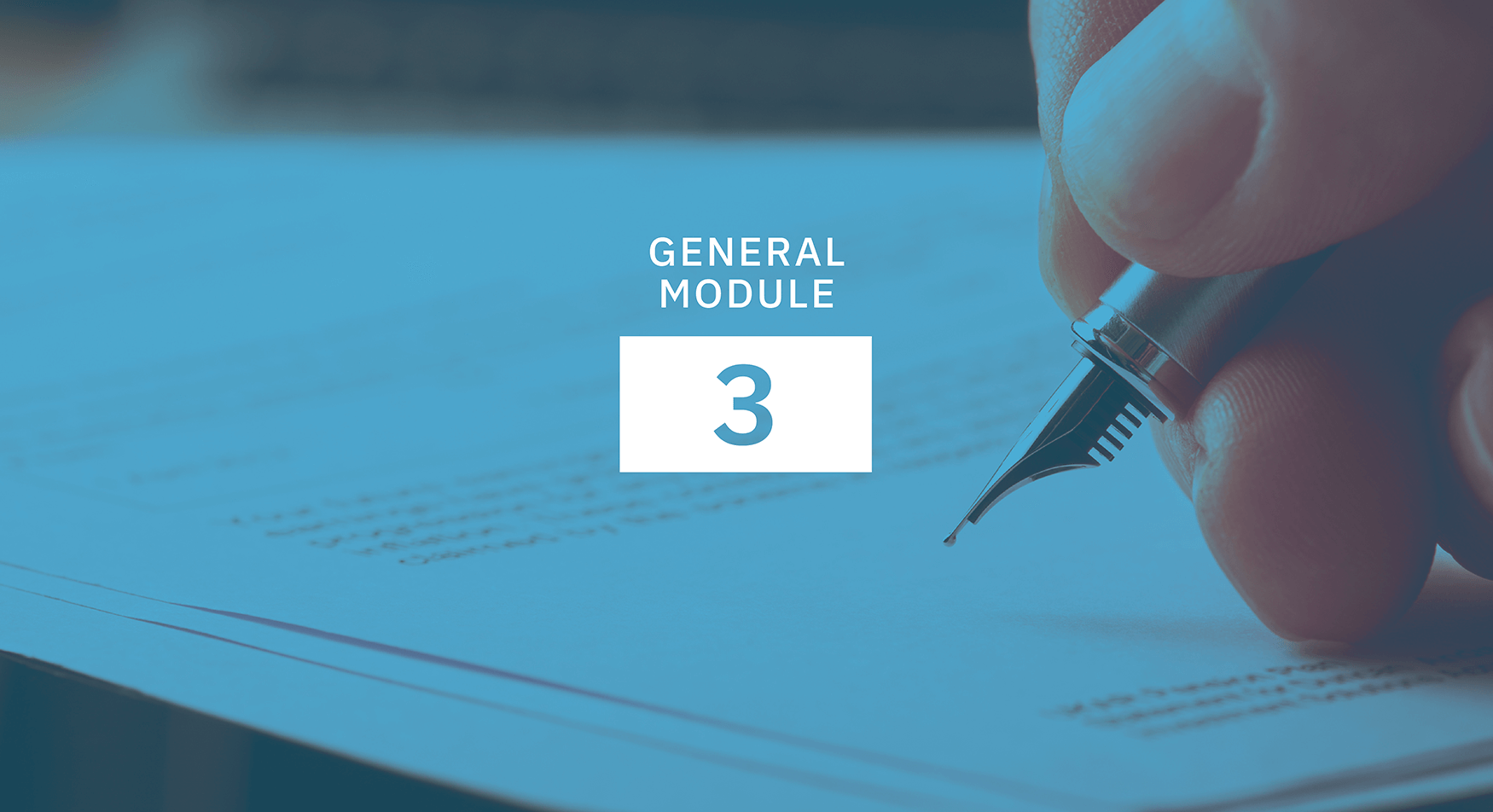
- Module 3: The Chemical Weapons Convention Article by Article
In this module you will get an insight into the provisions of the Convention starting with the Preamble, and covering the 24 Articles, and three Annexes of the Chemical Weapons Convention.
A pass grade of 80% in the Final Test is required to obtain a Certificate.
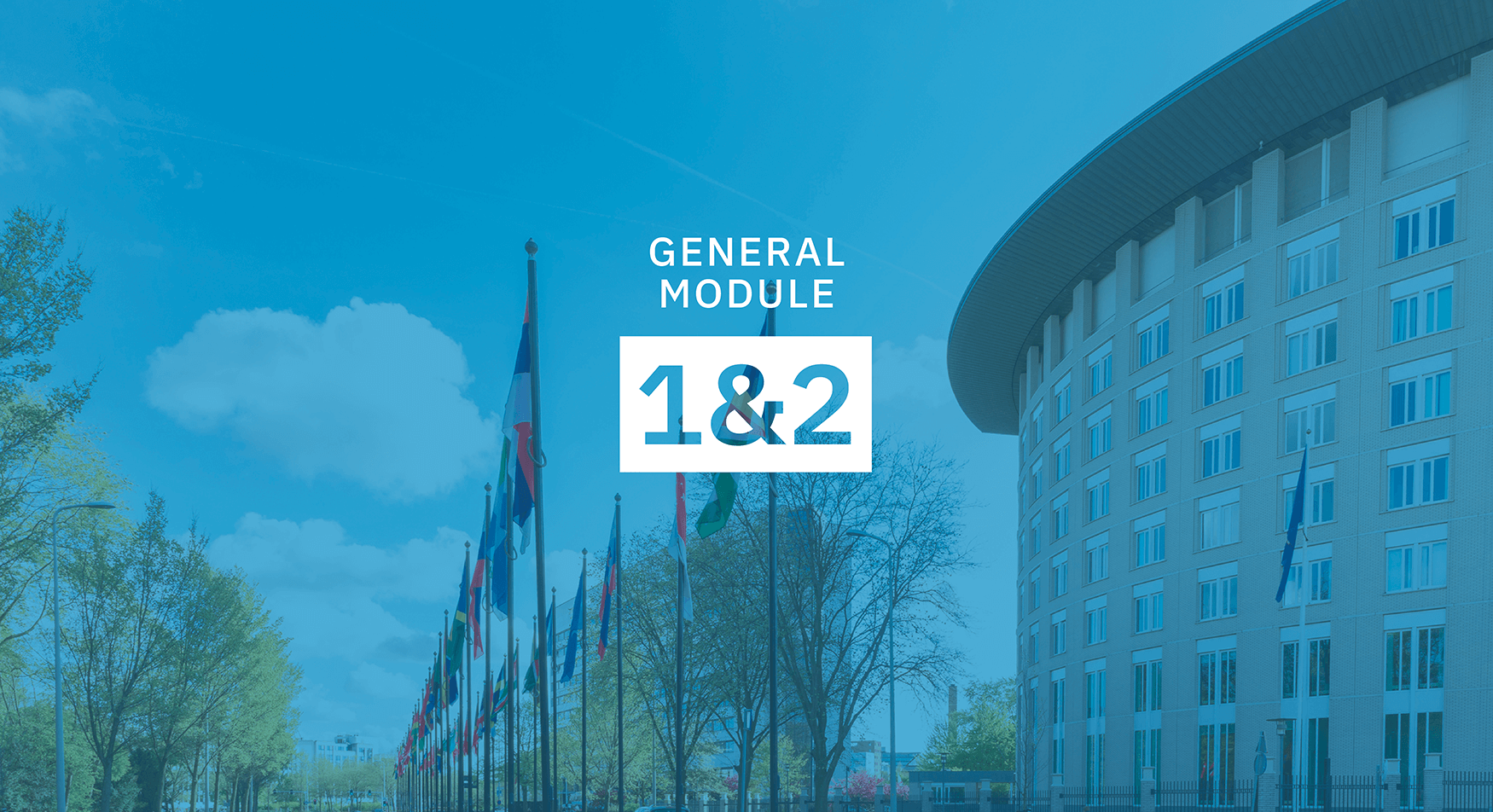
- Module 1-2: History of Chemical Weapons, the Chemical Weapons Convention and Introduction to the OPCW
-
In this module you will learn about the history of chemical weapons, the Chemical Weapons Convention (CWC) and the implementing body of the CWC: the Organisation for the Prohibition of Chemical Weapons (OPCW).
A pass grade of 80% in the Final Test is required to obtain a Certificate.

- Histoire des armes chimiques, Convention sur l’interdiction des armes chimiques et l’OIAC
Dans ce module, vous en apprendrez davantage sur l’histoire des armes chimiques, sur la Convention sur l’interdiction des armes chimiques ainsi que sur l’organe de mise en œuvre de la Convention : l’Organisation pour l’interdiction des armes chimiques (OIAC).
Une note minimale de 80 % au test final est requise pour obtenir le certificat.

- Mise en place et gestion d’une autorité nationale
Dans ce module, vous apprendrez comment mettreen place et géreruneautoriténationale et découvrirez les missions et obligations spécifiques qui incombent à unetelleautorité.
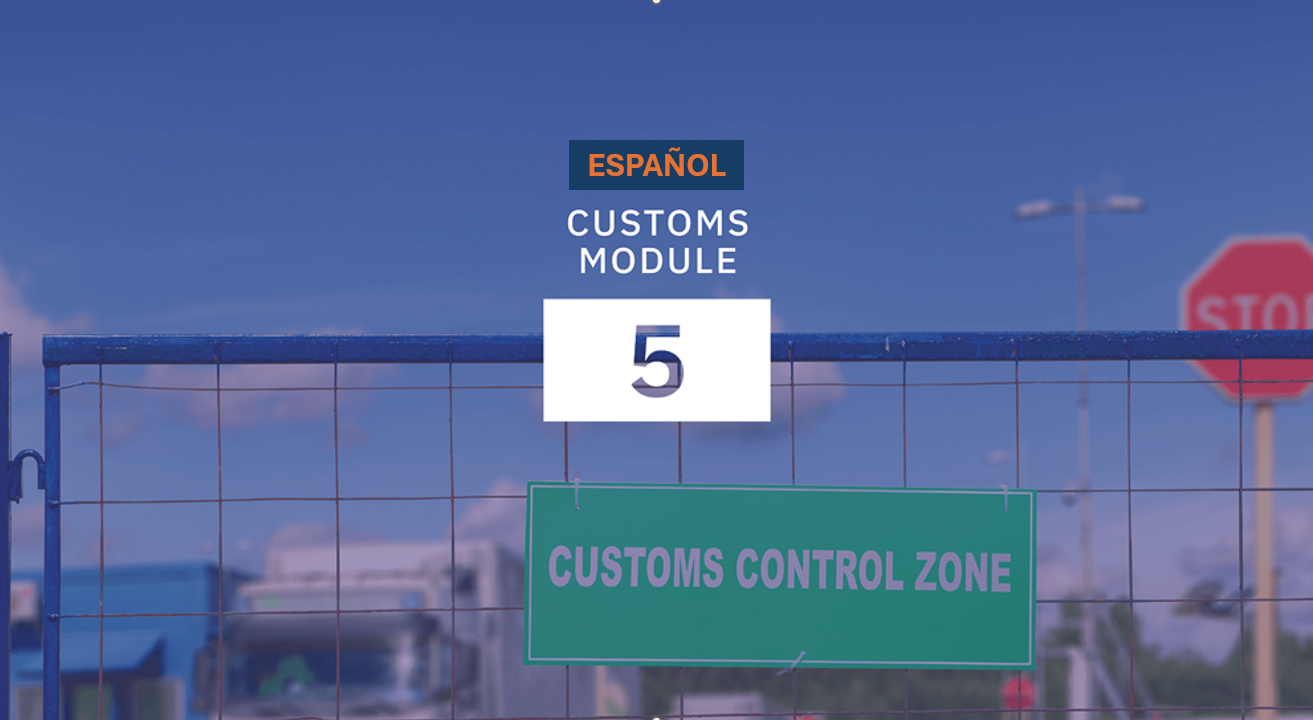
- Problemas en la presentación de informes sobre importaciones y exportaciones
En este módulo aprenderá sobre el proceso de verificación llevado a cabo por la Secretaría Técnica de la OPAQ, el concepto de discrepancias en las transferencias según la Convención y las principales causas de dichas discrepancias. Se discutirán los pasos que deben dar las Autoridades Nacionales para resolver las discrepancias en las transferencias.
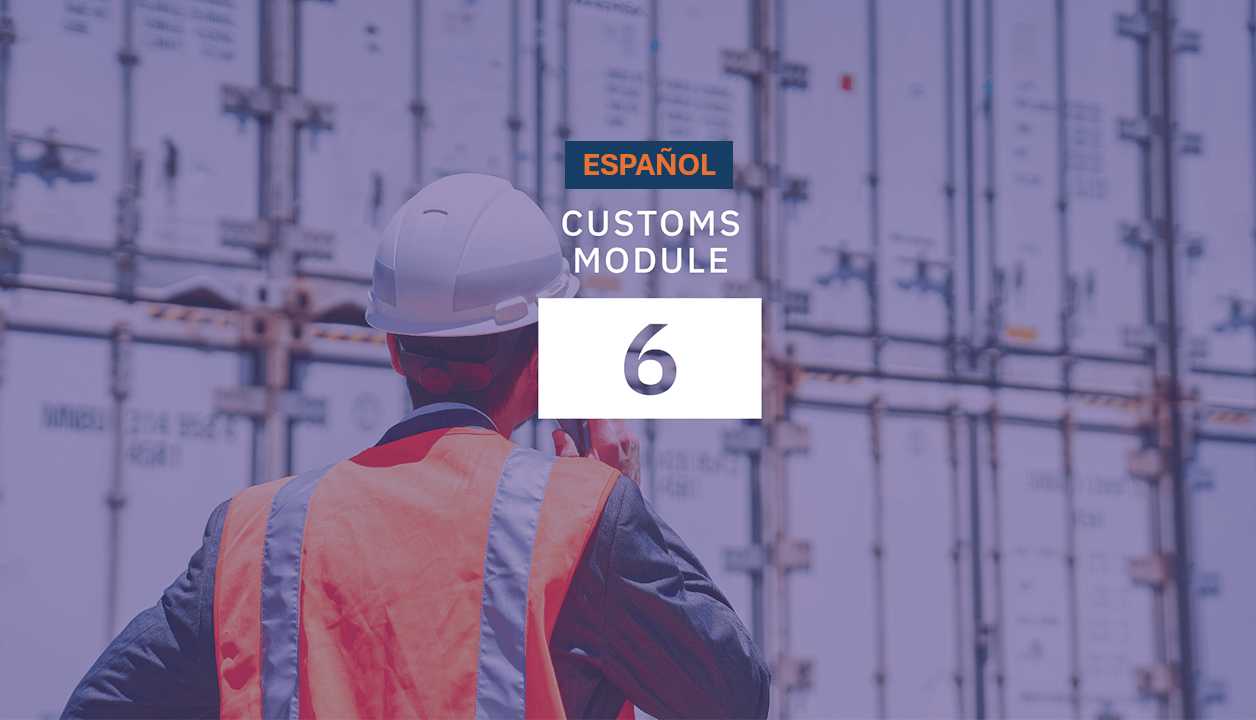
- Cuestiones prácticas del control del comercio internacional de sustancias químicas de las Listas
Este módulo aborda cuestiones relacionadas con el control del comercio internacional de sustancias químicas de las Listas. Presenta el enfoque integrado del control del comercio estratégico, el papel de las aduanas en el control de las sustancias químicas estratégicas y los procedimientos a seguir cuando se encuentran sustancias químicas tóxicas. El módulo también explora los tipos comunes de equipos y métodos disponibles para analizar las sustancias químicas de las Listas, una evaluación básica del riesgo de las sustancias químicas y algunos métodos de transferencia ilícita comúnmente utilizados.
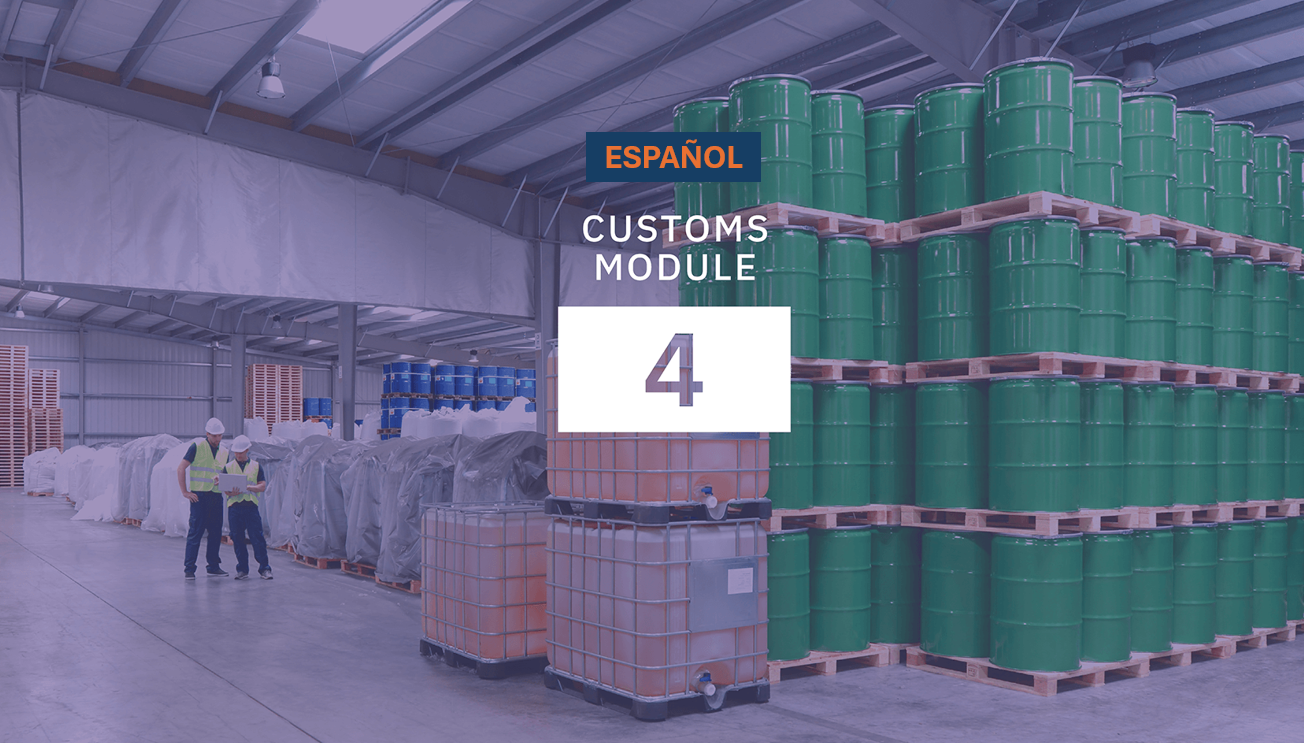
- Identificación de las sustancias químicas de las Listas
En este módulo, aprenderá a identificar sustancias químicas de las Listas, algunos identificadores químicos comunes y herramientas que le ayudarán en la identificación.

- Transferencia de sustancias de las Listas de la Convención sobre las Armas Químicas
En este módulo conocerá las disposiciones sobre transferencia de la Convención sobre las Armas Químicas, así como las responsabilidades y el papel de las Autoridades Nacionales y las autoridades aduaneras en la aplicación de estas disposiciones.

- Module 5: Problems in Reporting Imports and Exports
In this moduleyou’lllearn about the verification process carried out by the Technical Secretariat of the OPCW, the concept of transfer discrepancies under the CWCandprincipal causes for such discrepancies. Steps that National Authorities should take in order to resolve transfer discrepancies will be discussed.
A pass grade of 80% in the Final Test is required to obtain a Certificate.
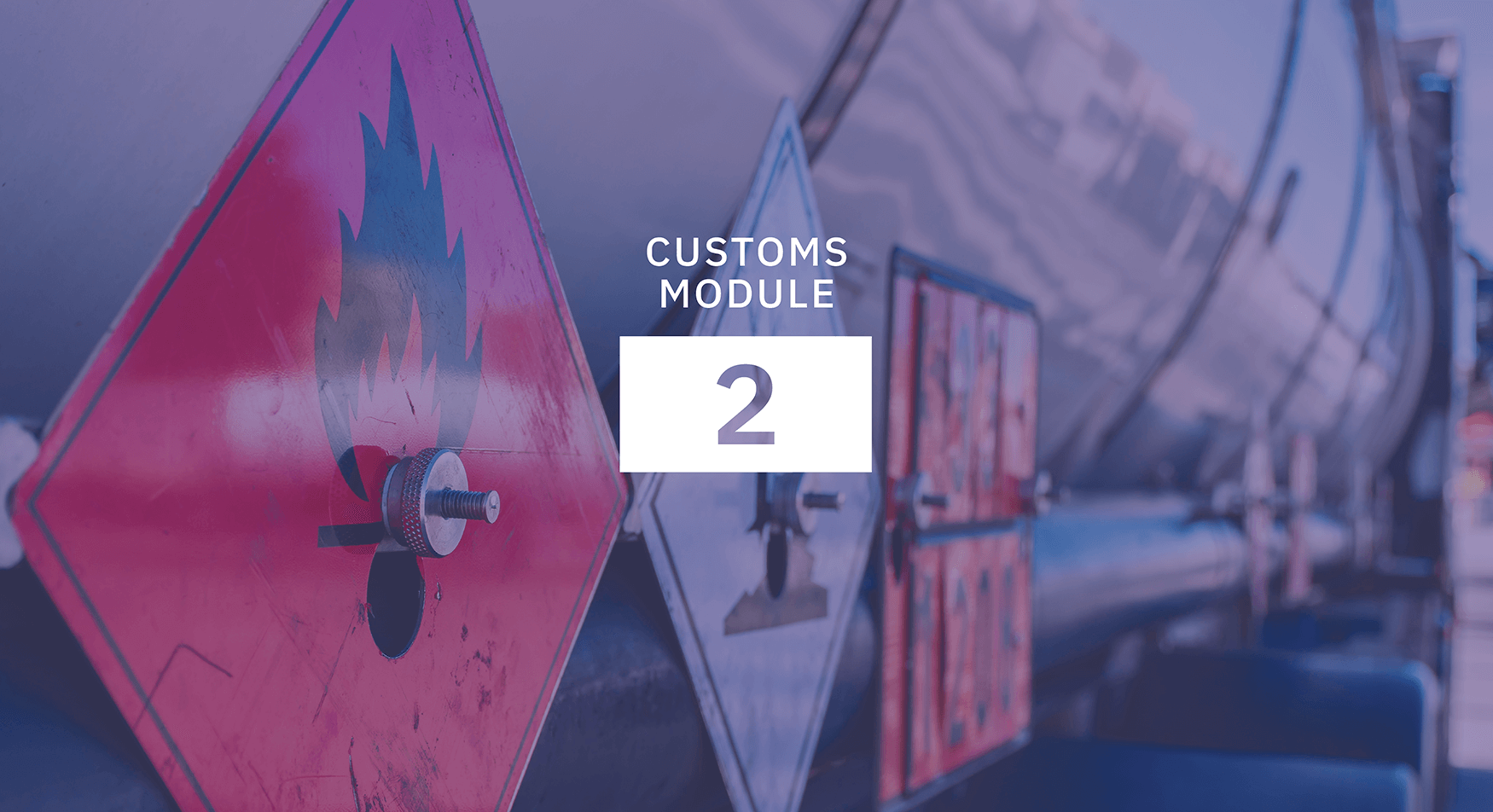
- Las sustancias químicas de las Listas y sus principales usos
Este módulo explora el concepto de sustancias químicas de doble uso, su utilización con fines legítimos y prohibidos, las tres Listas de sustancias químicas incluidas en el Anexo sobre Sustancias Químicas de la Convención sobre las Armas Químicas, y las sustancias químicas orgánicas diferenciadas y por qué están sujetas a notificación y verificación en virtud de la Convención.
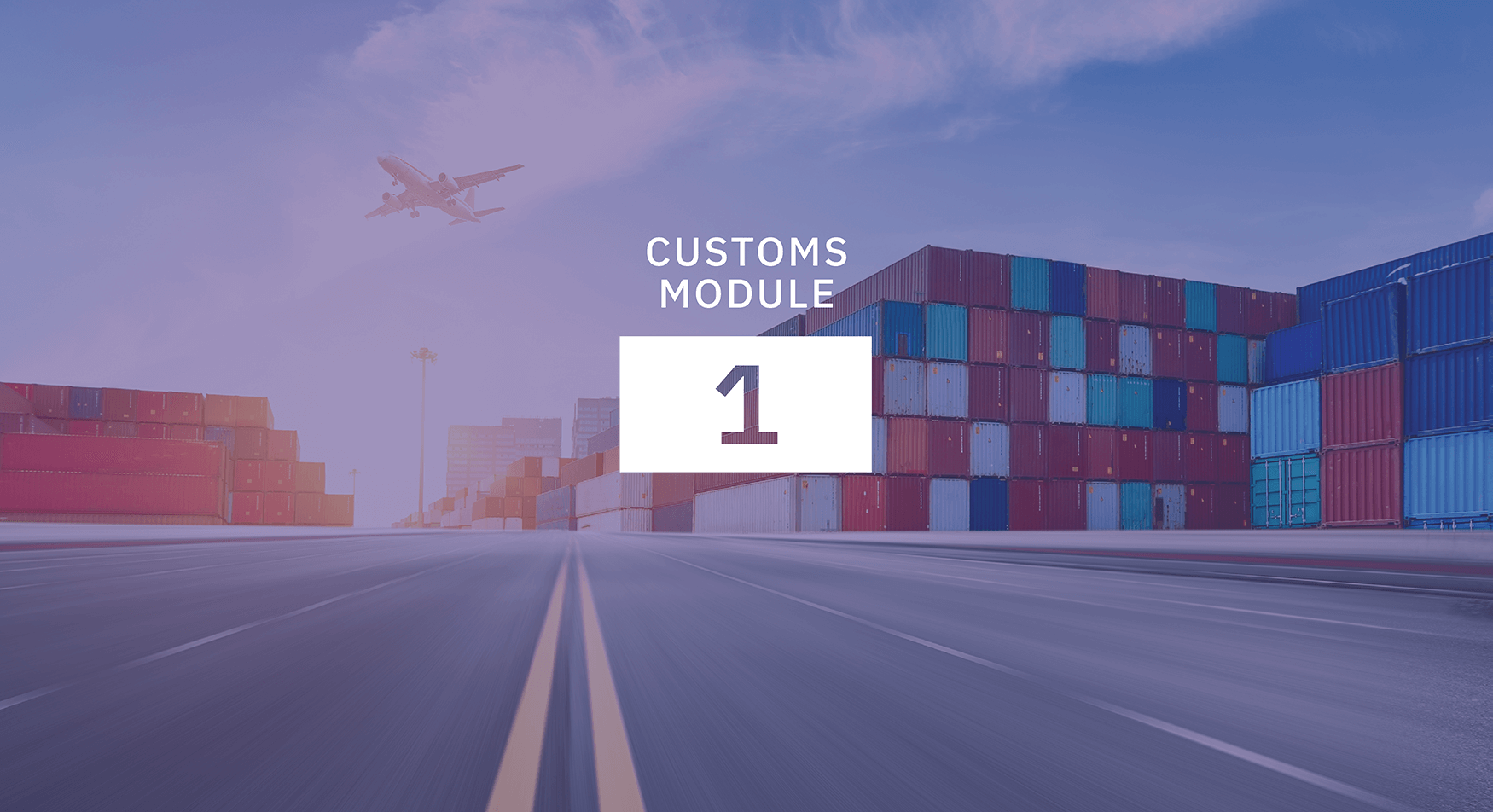
- La Convención sobre las Armas Químicas y el papel que cumplen las aduanas en su aplicación
Bienvenido a este curso de aprendizaje electrónico acerca de la Convención sobre las Armas Químicas. El curso está dirigido a funcionarios aduaneros de primera línea que gestionan envíos de sustancias químicas en su labor diaria. No se necesitan conocimientos previos de química para seguir el contenido.

- Module 6: Practical Issues in Controlling the International Trade of Scheduled Chemicals
This module covers issues related to control of international trade of scheduled chemicals. It introduces the integrated approach of strategic trade control, the role of Customs in controlling strategic chemicals and procedures to follow when encountering toxic chemicals. The module also explores common types of equipment and methods available for analysing scheduled chemicals, a basic risk assessment for chemicals, and some commonly used illicit transfer methods.
A pass grade of 80% in the Final Test is required to obtain a Certificate.
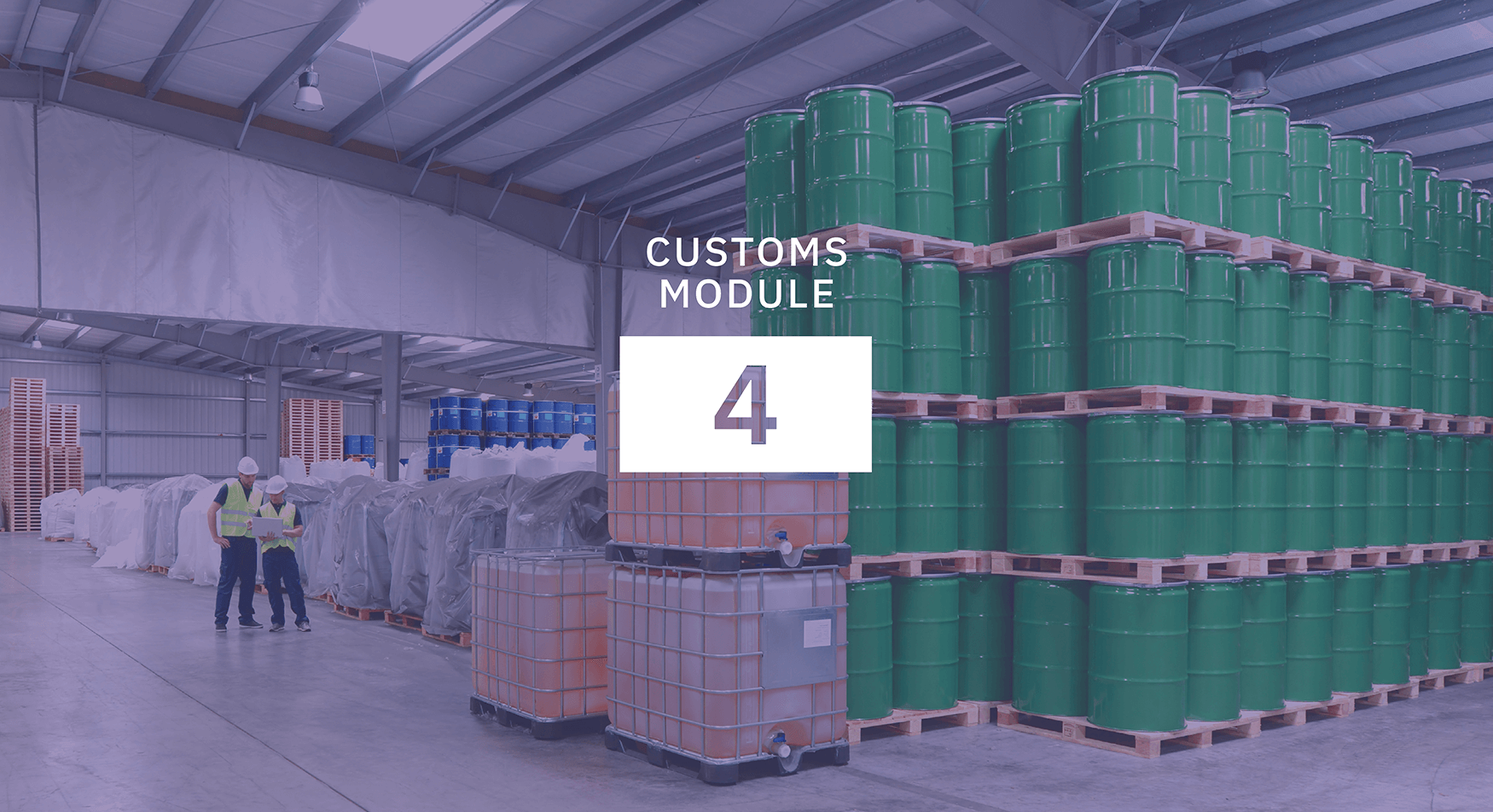
- Module 4: Identification of Scheduled Chemicals
In this module you’ll learn about identification of scheduled chemicals, some common chemical identifiers, and tools to assist with the identification.
A pass grade of 80% in the Final Test is required to obtain a Certificate.

- Module 3: Transfers of Scheduled Chemicals under the CWC
In this module you’ll learn about the transfer provisions under the Chemical Weapons Convention (CWC), and responsibilities and the role of National Authorities and customs authorities in implementing these provisions.
A pass grade of 80% in the Final Test is required to obtain a Certificate.

- Module 2: Scheduled Chemicals and Principal Uses
This module explores the concept of dual use chemicals, their use for legitimate and prohibited purposes, the three Schedules of chemicals listed in the Annex on Chemicals of the Chemical Weapons Convention (CWC), and discrete organic chemicals and why they are subject to reporting and verification under the CWC.
A pass grade of 80% in the Final Test is required to obtain a Certificate.

- Module 1: Chemical Weapons Convention and the Role of Customs in its Implementation
In this module you’ll learn
about chemical weapons, key CWC provisions, and the OPCW Verification Regime.
It will explore the role of National Authorities in CWC implementation and
their cooperation with other stakeholders, the role of customs, OPCW
capacity-building support for customs and cooperation with the World Customs
Organisation.
A pass grade of 80% in the Final Test is required to obtain a Certificate.
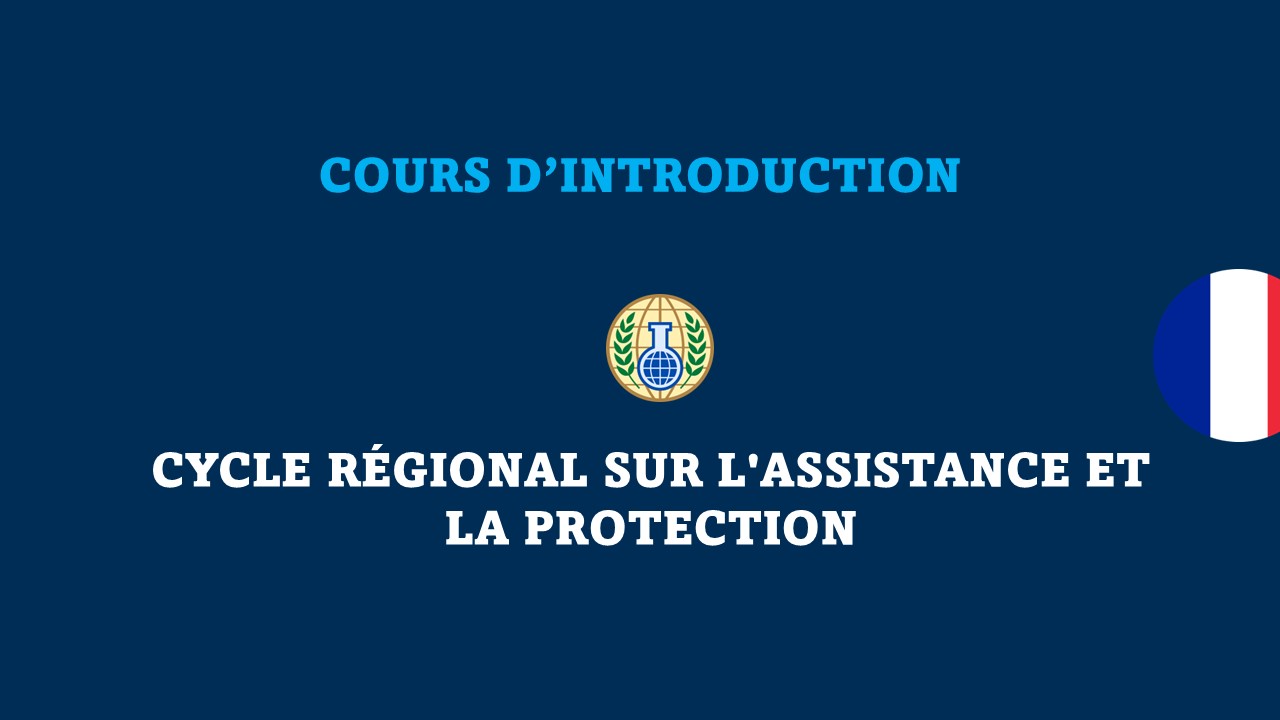
- Cours d'introduction - Cycle de formation sur l'assistance et la protection
Le Secrétariat technique de l'OIAC vous souhaite la bienvenue au cours d’introduction en ligne
sur la réponse d'urgence aux incidents impliquant des produits chimiques
toxiques. Ce cours a été élaboré par le Service de l'assistance et de la
protection de l'OIAC.
Ce cours offrira à tous les participants des connaissances théoriques de
base sur l'OIAC, la Convention, les agents chimiques de guerre, les produits
chimiques industriels toxiques, les équipements de protection individuelle, la
décontamination, la détection, l'identification et la surveillance.
Le cours est divisé en chapitres qui sont présentés dans un ordre
consécutif au fur et à mesure de la progression du cours. Chaque module
comprend du matériel visuel obligatoire, ainsi que de la documentation
supplémentaire et du matériel de référence pour renforcer les connaissances.
Tous les modules seront évalués par le biais de quiz ou de tests.
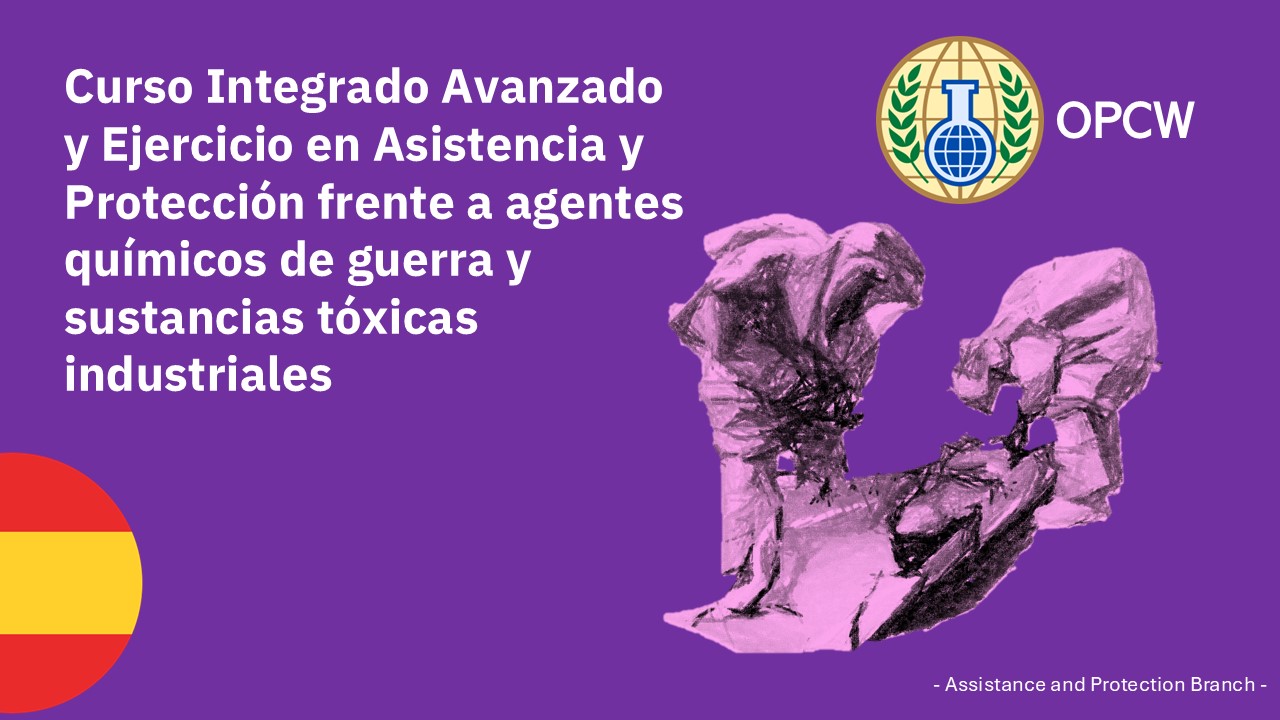
- Curso Online Integrado Avanzado y Ejercicio en Asistencia y Protección frente a Agentes Quimicos de Guerra y Sustancias Tóxicas Industriales
El curso esencial en línea ofrecerá conocimientos teóricos básicos para todos los participantes sobre la OPAQ, la Convención, los agentes de guerra química, los productos químicos industriales tóxicos, las propiedades fisicoquímicas de los productos químicos, el equipo de protección personal, la descontaminación, detección, identificación y monitoreo, ERG, CAMEO Chemicals y el Comando de Incidentes.
Este curso ayudrá a los participantes para afrontar con éxito el siguiente segmento del ciclo, cuidando ciertos aspectos técnicos que les serán de utilidad en la respuesta a emergencias.
PROPOSITO DEL CURSO:
Proporcionar los suficientes conocimientos teóricos sobre respuesta a emergencias químicas que los participantes necesitan para poder afrontar la siguiente fase del ciclo de formación en Asistencia y Protección, pudiendo así utilizar la oportunidad que brinda el curso integrado avanzado+ejercicio para realizar sesiones prácticas y desarrollo de escenario de respuesta a emergencias.
CONTENIDO:
- Capítulo 1. Convención de Armas Químicas (CAQ).
- Reseña histórica
- La Convención de Armas Químicas
- La OPAQ
- Artículo X de la CAQ
- Capítulo 2. Propiedades fisico-quimicas
- Estados de la materia
- Fórmula química y peso molecular
- Densidad
- Presión de vapor
- Solubilidad
- Acidez y basicidad
- Toxicidad
- Capítulo 3. Agentes Químicos de Guerra y Sustancias Tóxicas Industriales.
- Armas Químicas
- Agentes Químicos de Guerra
- Exposición a AQG
- Sustancias Tóxicas Industriales
- Capítulo 4. Protección Personal.
- Protección Respiratoria
- Trajes de Protección Química
- Niveles de Protección OPAQ
- Capítulo 5. Descontaminación
- Generalidades sobre descontaminación
- Sistemas de descontaminación
- Soluciones y agentes descontaminantes
- Técnicas de descontaminación
- Capítulo 6. Detección e Identificación
- Métodos de reconocimiento
- Detección de agentes químicos
- Identificación de agentes químicos
- Equipos de detección y medida
- Capítulo 7. Guia de Respuesta a Emergencias
- Generalidades
- Páginas amarillas
- Páginas azules
- Páginas narjas
- Páginas verdes
- Capítulo 8. CAMEO Chemicals
- Generalidades
- Busqueda de sustancias quimicas
- Busqueda de sustancias quimicas por nombre
- Busqueda de sustancias quimicas por numero ONU
- Reactividad química
- Capítulo 9. Coamndo de Incidentes
- Historia del SCI
- SCI definiciones
- Estructura y funciones del SCI
- Pasos a seguir por el primer respondiente con capacidad operativa

- Online Integrated Advanced course and Exercise in Assistance and Protection against Chemical Warfare Agents and Toxic Industrial Chemicals
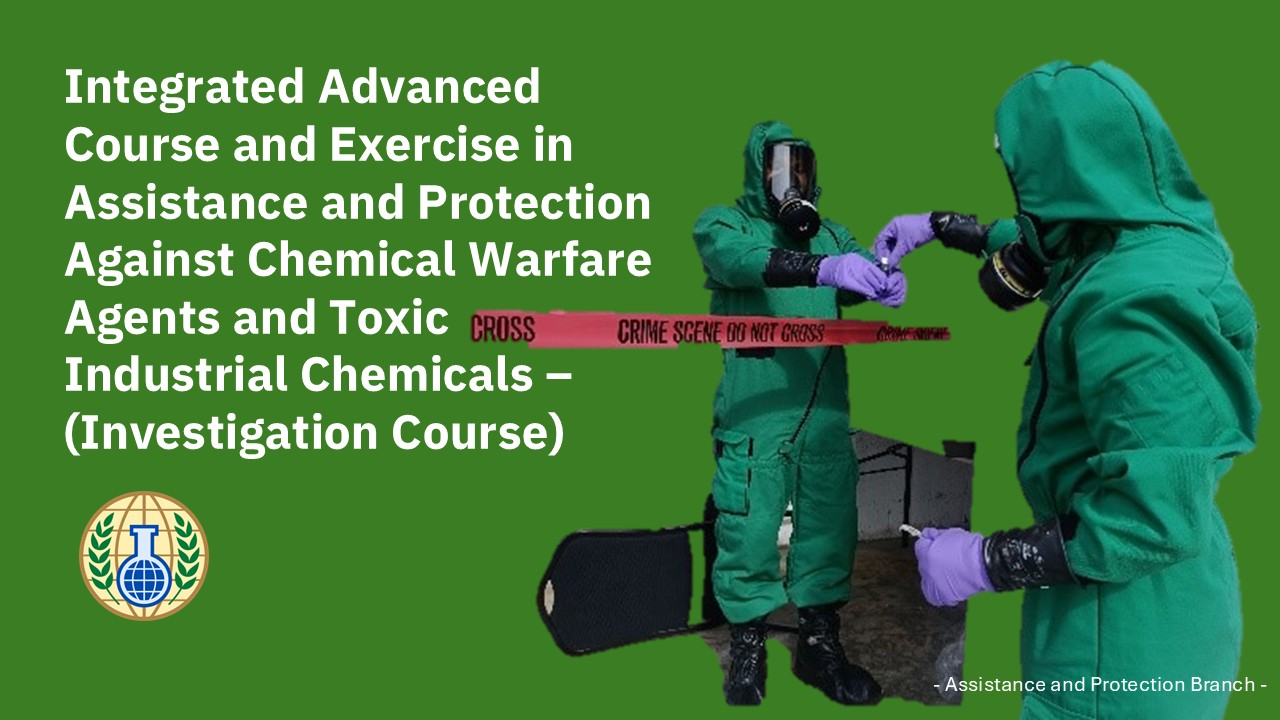
- Online Integrated Advanced Course and Exercise in Assistance and Protection Against Chemical Warfare Agents and Toxic Industrial Chemicals – (Investigation Course)
- Cours en ligne sur le Guide des mesures d'urgence, la base de données CAMEO Chemicals et le système de gestion des incidents - Cycle de formation sur l'assistance et la protection
Ce cours correspond au troisième segment du cycle
de formation sur l’assistance et la protection contre les armes chimiques. Il sert
de base au cours avancé et exercice qui aura lieu en présentiel (quatrième
segment du cycle).
Ce segment obligatoire se compose de 4 chapitres. Les
évaluations à la fin de chaque chapitre doivent être réussies avec un minimum
de 50% de bonnes réponses.
CONTENU:
Chapitre 1.
PROPRIÉTÉS PHYSICO-CHIMIQUES
- États de la matière
- Formule
chimique et poids moléculaire - Densité
- Pression de vapeur
- Solubilité
- Acidité et basicité
- Toxicité
Chapter 2. GUIDE DES MESURES D’URGENCE
- Généralités
- Pages jaunes
- Pages bleues
- Pages oranges
- Pages vertes
Chapter 3.
CAMEO Chemicals
- CAMEO Chemicals
- Généralités
- Rechercher des produits chimiques
- Rechercher
des produits chimiques par nom - Rechercher
des produits chimiques par numéro ONU - Réactivité chimique
Chapitre 4. SYSTÈME DE GESTION DES INCIDENTS
- Histoire du SGI
- Définitions du SGI
- Structure
et fonctions du SGI - Étapes à
suivre par le premier intervenant ayant une capacité opérationnelle

- Cours avancé et exercice intégrés - Cours d'introduction en ligne
Objectif du cours
Développer les connaissances essentielles en matière d'intervention d'urgence face à des agents chimiques toxiques afin de contribuer à la phase suivante du programme d'études.
Contenu
1. La Convention sur les armes chimiques
2. Propriétés physico-chimiques des substances
3. Agents chimiques de guerre et produits chimiques industriels toxiques
4. Protection individuelle
5. Décontamination
6. Détection et identification
7. Guide des mesures d‘urgences
8. CAMEO Chemicals
9. Système de commandement des interventions
Évaluation
Chaque chapitre comprend un questionnaire d'évaluation que vous devez remplir et obtenir un minimum de 60% de réponses correctes pour réussir le cours. Veillez à remplir tous les questionnaires avant de terminer le cours. Veuillez noter que n'avez le droit qu'à deux tentatives pour réussir le quiz.
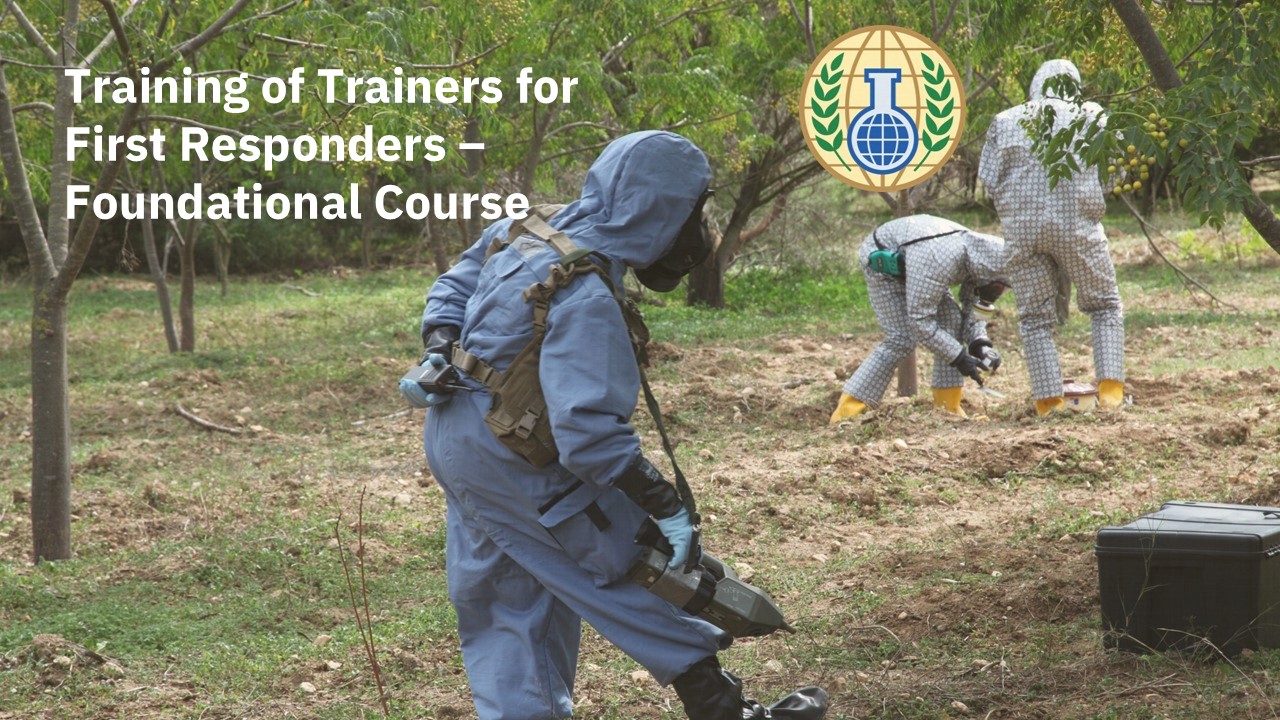
- Training of Trainers for First Responders - Foundational Course
This training-of-trainers (ToT) programme is organised by the Assistance and Protection Branch, within the framework of Article X of the Chemical Weapons Convention. The purpose of this course is to support the continuous education and development of instructors, and enhance sustainable national and regional training capacities in chemical emergency response.
- Online course on the Emergency Response Guidebook (ERG), the CAMEO (Computer-Aided Management of Emergency Operations) Chemicals database and the Incident Command System (ICS) - Assistance and Protection Training Cycle
This course corresponds to the third segment of the Assistance and Protection training Cycle and serves as the basis for the advanced combined face-to-face course + exercise (fourth segment of the regional APB cycle).
It is a mandatory segment that consists of 4 chapters and their corresponding evaluations that must be passed with a minimum of 50% correct answers in each of the questionnaires.
CONTENTS:
Chapter 1. PHYSICO-CHEMICAL PROPERTIES
- States of the material
- Chemical formula and molecular weight
- Density
- Vapor pressure
- Solubility
- Acidity and basicity
- Toxicity
Chapter 2. EMERGENCY RESPONSE GUIDE
- Generalities
- Yellow Pages
- Blue pages
- Orange pages
- Green pages
Chapter 3. CAMEO Chemicals
- CAMEO Chemicals
- Overview
- Search chemicals
- Search chemicals by name
- Search chemicals by UN number
- Chemical reactivity
Chapter 4. INCIDENT COMMAND SYSTEM
- ICS history
- ICS definitions
- Structure and functions of the ICS
- Steps to be followed by the first responder with operational capacity
- Online foundation Course - Assistance and Protection Training Cycle
The Technical Secretariat of the Organisation for the Prohibition of Chemical Weapons (OPCW) and the Assistance and Protection Branch (APB) welcome you to the Foundation Course on Assistance and Protection against chemical warfare agents and toxic industrial chemicals. The course comprises five chapters that provide the theoretical technical knowledge required to prepare for the regional training cycle on assistance and protection.
The course will establish a minimum common base among all the participants of future APB training activities and cycles. This course does not grant participation in the entire cycle on Assistance and Protection, but it is a prerequisite to access it.
It is essential to view and read all the course content for the success in the continuity of the training cycle.
Each of the respective chapters has an evaluation questionnaire that is MANDATORY to comply with and whose minimum mark to pass the course is 50% of correct answers. Make sure that all the questionnaires are done before the end of the course.
CONTENT:
CHAPTER 1 CHEMICAL WEAPONS CONVENTION
1.1. Introduction
1.2. Historical review
1.3. CWC
1.4. OPCW
1.5. Article X of the CWC
1.6. Nobel Peace Prize
CHAPTER 2. CHEMICAL WARFARE AGENTS AND TOXIC INDUSTRIAL CHEMICALS
2.1. Introduction
2.2. Chemical weapons
2.3. Chemical warfare agents
2.4. Toxic industrial chemicals
2.5. Toxic industrial chemicals - Examples
CHAPTER 3. PERSONAL PROTECTION
3.1. Introduction
3.2. Respiratory protection
3.3. Chemical protective suits
CHAPTER 4. DECONTAMINATION
4.1. Introduction
4.2. Decontamination overview
4.3. CWA decontamination
4.5. Decontamination stations and corridors
CHAPTER 5. DETECTION AND IDENTIFICATION
5.1. Introduction
5.2. Recognition procedures
5.3. Detection and Identification overview
5.4. Detection
5.5. Identification

- Curso ONLINE sobre la Guía de Respuesta a Emergencias (GRE), CAMEO Chemicals y Comando de Incidentes
Este curso se corrersponde con el tercer segmento del Ciclo Regional de Asistencia y Protección para los Estados parte del GRULAC y, sirve de base para el curso presencial combinado avanzado+ejercicio (cuarto segmento del ciclo regional de APB)
Se trata de un segmento de obligado cumplimiento que contsta de 4 capítulos y sus correspondientes evaluaciones que hay que superar con un minimo del 50% de respuestas correctas en cada uno de los cuestionarios.
CONTENIDOS:
Capítulo 1. PROPIEDADES FISICO-QUIMICAS
- Estados de la materia
- Fórmula química y peso molecular
- Densidad
- Presión de vapor
- Solubilidad
- Acidez y basicidad
- Toxicidad
Capítulo 2. GUIA DE RESPUESTA A EMERGENCIA
- Generalidades
- Páginas amarillas
- Páginas azules
- Páginas naranjas
- Páginas verdes
Capítulo 3. CAMEO Chemicals
- Generalidades
- Busqueda de sustancias químicas
- Busqueda de sustancias químicas por nombre
- Busqueda de sustancias químicas por numero ONU
- Reactividad química
Capítulo 4. SISTEMA DE COMANDO DE INCIDENTES
- Historia del SCI
- SCI definiciones
- Estructura y funciones del SCI
- Pasos a seguir por el primer respondiente con capacidad operativa
- Curso Introductorio online - Ciclo Regional de Asistencia y Protección para el GRULAC.
La Secretaría Técnica de la Organización para la Prohibición de las Armas Químicas (OPAQ) y la Subdivisión de Asistencia y Protección (APB) les dan la bienvenida al Curso Introductorio sobre Asistencia y Protección frente a agentes de guerra química y sustancias tóxicas industriales. Este curso consta de cinco capítulos que son la base para obtener conocimientos técnicos teóricos necesarios para poder afrontar el ciclo regional de formacion sobre asistencia y protección.
El curso pretende establecer una base mínima común entre todos los participantes de futuros actividades y ciclos de formación de APB. Este curso no ragrantiza la participación en el Ciclo regional sobre Asistencia y Protección pero si es un requisito para poder ácceder al mismo.
Es imprescindible la visualización y lectura de todo el contenido del curso para un mayor éxito en la continuidad del ciclo de formación.
Cada uno de los respectivos capítulos cuenta con un cuestionario de evaluación que son de OBLIGADO cumplimiento y cuya marca mínima para pasar el curso es de un 50% de respuestas acertadas. Asegurese de que todos los cuestionarios están realizados antes de la finalización del curso.
CONTENIDOS:
CAPÍTULO 1. CONVENCIÓN DE ARMAS QUÍMICAS
1.1. Introducción
1.2. Historia
1.3. CAQ
1.4. OPAQ
1.5. Artículo X de la CAQ
1.6. Premio Nobel
CAPÍTULO 2. AGENTES QUÍMICOS DE GUERRA Y TÓXICOS INDDUSTRIALES
2.1. Introducción
2.2. Armas Químicas
2.3. Agentes Químicos de Guerra
2.4. Tóxicos Industriales
2.5. Tóxicos Industriales - Ejemplos
CAPÍTULO 3. PROTECCIÓN PERSONAL
3.1. Introucción
3.2. Protección respiratoria
3.3. Trajes de Proteccion Química
CAPÍTULO 4. DESCONTAMINACIÓN
4.1. Introducción
4.2. Generalidades sobre descontaminación
4.3. Descontaminación de AQG
4.5. Estaciones y corredores de descontaminación
CAPÍTULO 5. DETECCIÓN E IDENTIFICACIÓN
5.1. Introduccion
5.2. Reconocimiento
5.3. Generalidades sobre detección e identificación
5.4. Detección
5.5. Identificación
